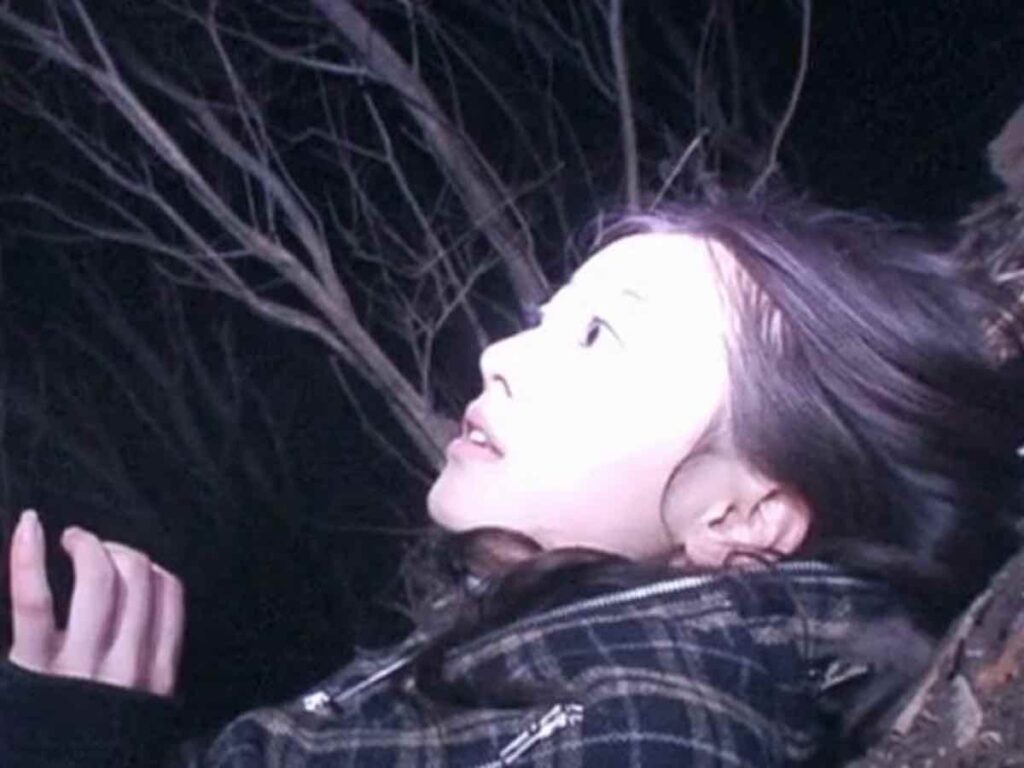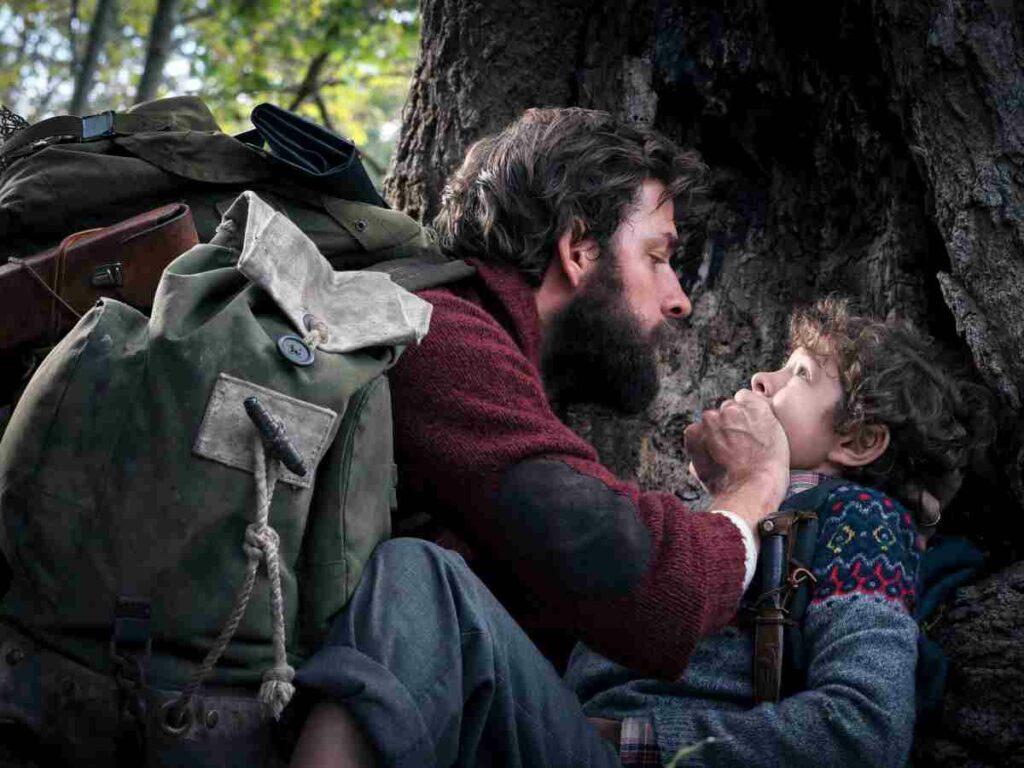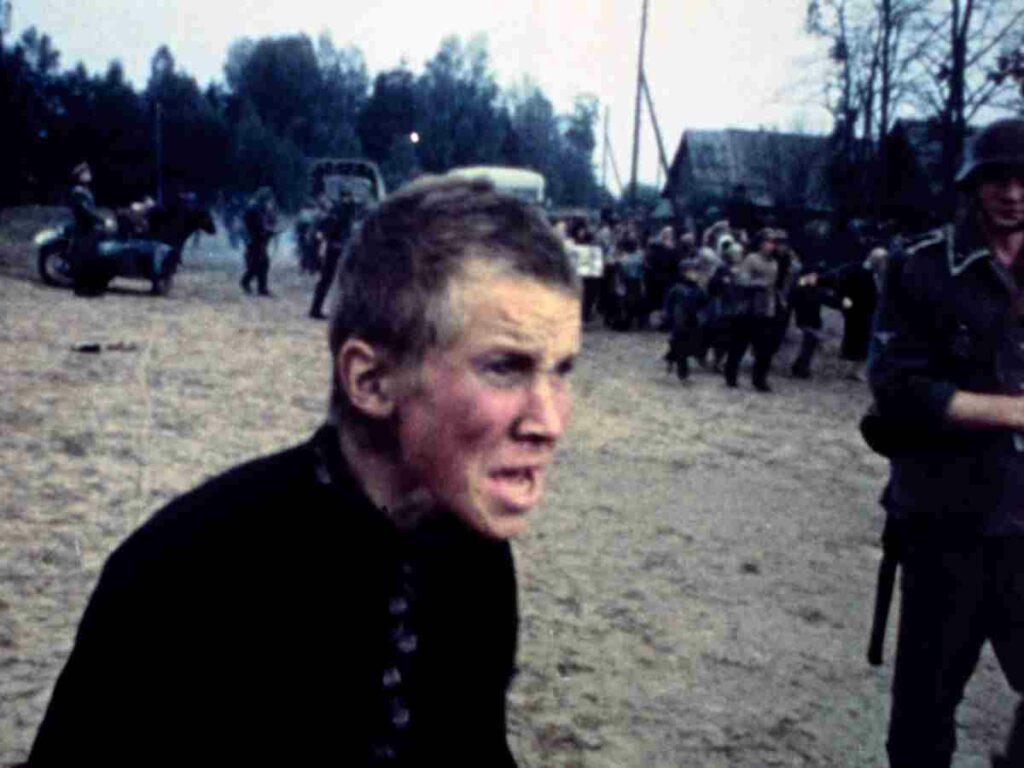From Ghostwatch (1992) to Europa Report (2013), these are the best mockumentary horror movies of all time.
A mockumentary is a fine tool to satirize societal absurdity and hypocrisy. Right from the early 1980s there’s been so much interest in these fake documentaries that it has become a separate genre. Peter Watkins’ disturbing 1965 drama War Game imagined a supposed nuclear attack on UK. The 1-hour film’s far-too-realistic portrayal of the aftermath of nuclear war won an Oscar for best documentary. It was one of the early terrifying mockumentaries that laid the path for this sub genre.
While mockumentaries slowly evolved to tell profound stories, the found-footage sub-genre merely started as a gimmick. Unlike horror-tinged satirical mockumentaries, straight-laced found-footage horrors were less imaginative. However, these types of horror films became immensely popular. For amateur filmmakers, this was often cheaper and easiest way to make films. A little hint of a special effect could be covered within shaky camera effects to create a sense of fear. For horror lovers, found-footage provided genuinely scary moments, due to the filmmakers’ constant toying with limited vision of the characters.
The smallest hint of something at the corner of a frame unnerved us more than the traditional scares in big-budget horrors. Despite the immediacy of the narrative, found-footage and mockumentary horror movies mostly used the same tiring stories. Only few tried to transcend the trappings of the sub-genre on both filmmaking and story level. The list below mentions some of those best efforts alongside other fairly good works.
15. Cannibal Holocaust (1980)
Ruggero Deodato’s controversial mockumentary mixes both traditional horror and satirical elements. It chronicles documentary film crew’s trip to South American jungles to document the warring tribes of cannibals. But they have mysteriously disappeared in the process. Deodato and writer Gianfranco Clerici’s primary intention is to critique the modern man’s attitudes in making exploitative anthropological documentations. It tries to highlight how the West believes that it is superior to cannibal tribes, only to find the boundaries between them blurring. It’s a very good idea. One that attempts to expose the capitalist society’s hypocrisy.
But the biggest problem with the film is its ironically brutal approach to make its point. Now Cannibal Holocaust is only known for onscreen killing of animals plus the scenes of murder and rape. Belgian black comedy Man Bites Dog uses the fake ‘snuff-movie’ element in a better way. Although not a traditional horror, Man Bites Dog delivers disturbing commentary on mankind’s hypocrisy and our penchant for voyeurism.
14. The Blair Witch Project (1999)
Three film students get together to make a short documentary about a local legend called The Blair Witch. They travel into Maryland forests, interview ‘local’ people yapping off about the ‘witch’. At the start of the film we are informed that these three people didn’t find their way out of the woods. The footage, however, has survived and been edited into a film. The hype for The Blair Witch reached its crescendo when numerous fans took the faux found-footage narrative as real and flocked to Maryland.
Is the movie scary? Yes, it certainly has its share of intense moments. But it’s more of a successful marketing gimmick than a great horror film. The psychological build-up in Blair Witch with minimal cinematic flourishes was later done to death (and sometimes better) in similar found-footage horrors. So it has lost its earlier sheen. Nevertheless, the story of how an unanticipated independent feature dwarfed big-budget summer movies still remains a very fascinating one.
13. The Poughkeepsie Tapes (2007)
FBI discovers hundreds of VHS tapes in a serial killer’s house who has captured his brutal work on tape. Stitching together faux police and family members’ interviews, the true-crime mockumentary looks at the killer’s reign of terror. Director John Erick Dowdle evokes enough tension through the monochromatic ‘crime’ scenes. Although the film’s tone is brutal, it doesn’t become mindless torture porn. Much of the brutal parts of killing are left to viewer’s imagination. Apart from the usual dose of shaky cam, the movie’s flaws include hokey acting. Dowdle later attempts at found-footage horror (Quarantine, As Above So Below) were comparatively poor.
12. Incident at Loch Ness (2004)
This oddly engaging horror/comedy is one of the most self-reflexive mockumentaries. The film brings together maverick auteur Werner Herzog and Hollywood screenwriter Zak Penn. Interestingly, the narrative revolves around a fabricated collaboration between Penn and Herzog. Herzog plays himself, and Penn a covetous producer. Herzog and his crew travel to Scotland to artfully examine the myth of a monster (Loch Ness). But they witness the myth turning into reality.
The feature’s robust factor is Werner Herzog whose charm and playfulness hold the otherwise silly affair. Penn’s direction falters a lot in the second half as it’s neither terrifying nor humorous. But despite all familiarities and cliches, it provides adequate campy fun for monster-myth lovers and Herzog followers.
11. Cloverfield (2008)
The huge success of Matt Reeves’ monster sci-fi horror owes a lot to expertly executed marketing campaign (spearheaded by J.J. Abrams) than to the film’s relative quality. The film’s ‘you-are-there’ viewpoint is basically an exploitation of the 9/11 imagery to provide mindless fun. The narrative largely takes place over a single night in New York when a brutal monster goes on a rampage. Director Reeves doesn’t lay much groundwork for emotional investment. But he gets one vital thing right: the presentation of frenetic action. Regardless of the nauseatingly shaky camerawork, the visceral attacks of the monster were effectively staged.
10. Afflicted (2013)
Cliff Prowse and Derek Lee’s different take on vampirism interestingly revives the worn-out style of mockumentary filmmaking. Real-life friends and short filmmakers Cliff & Derek play themselves in the narrative. Their fictional counterparts embark on a journey across the globe and document it on a video blog. Derek is diagnosed with a rare brain disorder. So, this happens to be the last occasion for the friends to do something memorable. However, the disorder surprisingly makes Derek stronger and super fast. The sudden change seems like great fun, but the friends soon learn the darker truth. Cliff and Derek perfectly sell action onscreen as their camaraderie brings reasonable emotional connection.
Derek’s experiments with new-found powers would draw comparison with found-footage thriller Chronicle (2012). But the reasons behind the origination of powers in Afflicted have the standard horror element, compared to Chronicle. Despite the ingenuity in storytelling in the first half, the narrative falters after the big revelation. It falls well short of spinning a memorable take on a time-worn horror trope. Nevertheless, it certainly stands out among other standard found-footage horror junks.
9. Paranormal Activity (2007)
Shot over 7 days with $11,000, Oren Pelli’s straightforward spook fest is an example in successful horror movie marketing. The film released in theaters with Steven Spielberg‘s support, earning an unprecedented $193.4 milion. Paranormal Activity was definitely creepier than the lost-in-the-woods found footage gimmick (Blair Witch Project). The film’s heroine Katie is a girl who has had supernatural experience throughout her life. Her live-in boyfriend Micah jumps at this opportunity and decides to capture the spirit on camera.
Video cameras are placed on tripod and set in the hallways and bedroom to document the supernatural intruder. Ofcourse, the camera doesn’t pick up any visual manifestations. But little troubling things begin to happen. Peli’s less-is-more approach and use of practical effects instill a genuine sense of dread in quite a few scenes. The final shots were unquestionably scary. However, there’s nothing original in this haunted-house narrative.
8. The Bay (2012)
Barry Levinson, the man behind acclaimed features like Rain Man, Wag the Dog surprisingly chose the mockumentary medium for his first horror film. The Bay tells the story of an allegedly ‘real’ environmental disaster, which was silenced by the government officials. Levinson’s use of this limited aesthetic medium was more professional than others. He juggles between eyewitness narration, (fake) surveillance footage, and home videos to gradually create a genuine sense of dread. The narrative takes place in the town of Claridge, Maryland. The local people suffer from an epidemic which may be due to dangerous parasites in the water. The idyllic bay area soon becomes an inescapable nightmare.
Although the horror element in the movie is exaggerated, there’s a serious and truthful side to its depiction of environmental degradation. Moreover, The Bay remains scarier upon reflection since it’s devoid of traditional scares. It’s a thought-provoking eco-horror.
7. Europa Report (2013)
Sebastian Cordero’s sci-fi horror takes a B-picture storyline and turns it around through streamlined filmmaking. The story revolves around a crew of astronauts who had landed on Jupiter’s moon Europa. After discovery of water below the icy surface of the moon, NASA is now preparing for an unmanned mission. In this exaggeration of a possible reality, the astronauts hope to uncover evidence of alien life. But communications falter and the crew gets stranded on a frozen rock. The discovery they make seems to rewrite mankind’s understanding of life beyond Earth. The multi-ethnic space crew members are played by fairly good professional actors.
Although the strong script lacks character development, these actors ably convey angst and wonder. The writing also takes a realistic, nuts-and-bolts approach to depict the scientific mission. Despite the overdone third act, Europa Report is far more intense than big-budget space horror flicks.
6. [REC] (2007)
Perky, young TV reporter Angela and her cameraman are taping the mundane details of firemen’s job. An allegedly routine call arrives to rescue few people trapped in an apartment complex. Angela enters into the dark building without anticipating the nightmarish scenario waiting for her. This Spanish horror basically takes Romero’s Zombie idea and combines it with Blair Witch aesthetics. Romero himself took the found-footage approach in Diary of the Dead, yielding poor results.
There are the usual quaky zoom-ins and tiring POV shots. But sudden moments of fright are executed sharply. The editing and sound design are impeccable. [REC] also has a brilliantly twisted final frightening moment. It’s American remake Quarantine (2008), was 15 minutes longer than the original (72 minutes).
5. Trollhunter (2010)
Norwegian filmmaker Andre Ovredal puts a black-comic horror spin on the troll mythology. Three student filmmakers travel to rural landscapes of Norway to shoot a documentary on bear poachers. Their trail leads to Hans, a mysterious guy who could be behind the bear killings. But Hans doesn’t seem to set trap for bears. The strength of the film lies in director Ovredal’s eye for details. He uses folklore to create a detailed backstory and a believably bleak atmosphere. The film reaches its comic heights when following around Hans, who divulges mundane details about his bizarre profession.
Although the horror elements don’t achieve what they set out to, the offbeat humor was brilliant. Furthermore, the lack of human characterization is made up by inclusion of individualistic traits for the monsters. Ovredal also uses the trolls to fleetingly examine jeopardized cultural identity.
4. Creep (2014)
Patrick Brice’s unnerving and darkly funny found-footage horror extracts fascinating results from a simple premise. Brice plays Aaron, a videographer who answers a vague Craigslist ad to make a quick buck. Aaron travels to beautiful mountain town to meet his client Josef (Mark Duplass). Josef says he is dying of brain tumor and wants to leave something for his unborn son. Aaron is glad to do the job, but Josef’s increasingly weird behavior puts him off. Creep could have been a full-fledged buddy comedy. But Brice finds a perfect balance between fiendish humor and unsettling horror.
The film entirely belongs to Mark Duplass’ masterful performance. He makes Josef both sympathetic and creepy. Brice’s handling of the found-footage scenario is effectively imaginative. There are some very clever stagings which break away from the sub-genre’s visual mediocrity.
3. Lake Mungo (2008)
Joel Anderson’s uncannily spooky Australian movie sort of begins in Lynchian territory. 16-year old Alice Palmer drowns at a lake during family outing. Her parents and brother find it hard to cope with the loss of Palmer. The family still feels the presence of Alice in their house. Mysterious noises emanate from the dead girl’s room and the mother has vivid nightmares. Apart from sharing the name ‘Palmer’, Alice keeps a diary and a lot of secrets. The twists in the narrative reveal the existence of a dark void beneath the tranquil surface similar to Lynch’s TV series.
Lake Mungo, irrespective of the familiar plot, is a contemplative horror movie, revolving around the themes of manipulation and memory. It has very few traditional shock elements and there are no traces of gore. Yet, Anderson’s low-key direction gradually casts a spell over us, creating a palpable sense of unease. The intense ending lingers long after the film is over.
2. Ghostwatch (1992)
BBC’s controversial horror mockumentary was first broadcast on Halloween 1992, before it was deemed too disturbing for re-telecast. After the DVD release in US and UK, the TV movie gained cult following. Stephen Volk & Lesley Manning’s Ghostwatch impeccably duped its audience than any of the later years’ found-footage horrors. It revolves around renowned TV presenters attempting to find solid proof of the supernatural in Britain’ infamous haunted house. Ghostwatch fascinatingly blends horror film and factual TV tropes.
To add to the film’s realistic atmosphere, BBC journalist and show host Michael Parkinson was cast. The others were also reporters who played themselves and not fictional characters. Naturally, it caused unrest among the audience who believed the scripted drama was also real. The film boasts quite a few chilling moments that catch us off guard. Even after 25 years, it holds enough power to keep us unsettled throughout.
1. Noroi aka The Curse (2005)
A good number of found footage horrors don’t rely on a plot but on first-person jumpscares. Koji Shiraishi’s The Curse remedies such filmmaking laziness with a very intricate storyline. The film is one long final video journal of Masafumi Kobayashi, a journalist who specializes in documenting paranormal phenomenon. The prologue informs us that Kobayashi and his wife have met with an unfortunate fate. His video journal is supposed to provide a clue as to what happened and what he was after. Kobayashi gets entangled in the world of archaic rituals, psychic children, gruesome deaths, and an ancient demon.
Director Shiraishi’s deliberate slow pace in the first half may put off some viewers. But those strong story-building segments impeccably allow the director to conjure absolute terror and doom in the latter half. There are the odd disorienting, shaky camera effects. However, for the most part, the staging of horror elements are imaginative and subtle. Shiraishi has earlier worked with famous J-horror directors who made path-breaking horror films like The Ring and The Grudge.
Notable Omissions
Behind the Mask: The Rise of Leslie Vernon (2004), Grave Encounters (2011), V/H/S (2012), The Taking of Deborah Logan (2014), The Sacrament (2013), The Fourth Kind (2009), and The Tunnel (2011).




